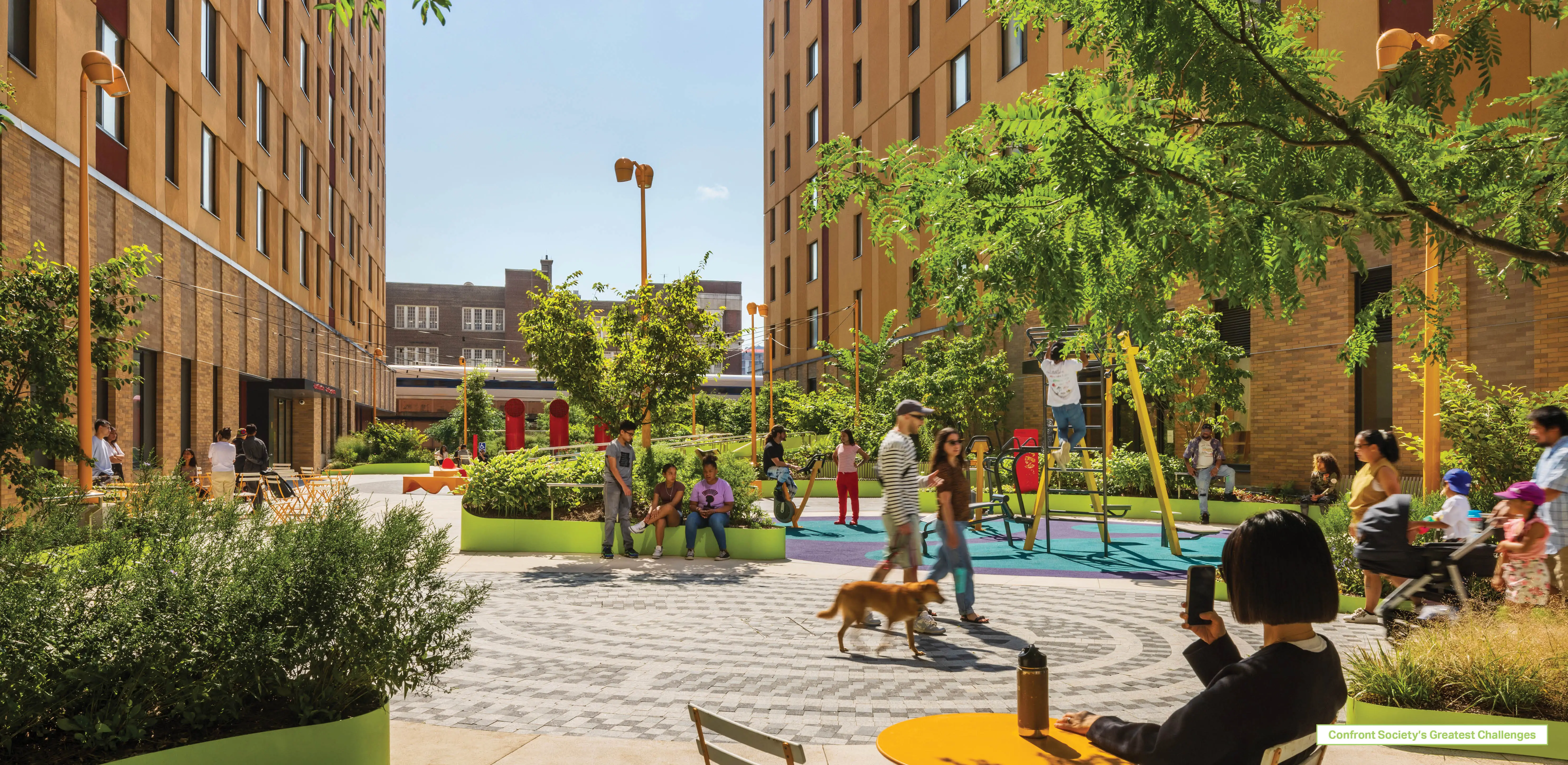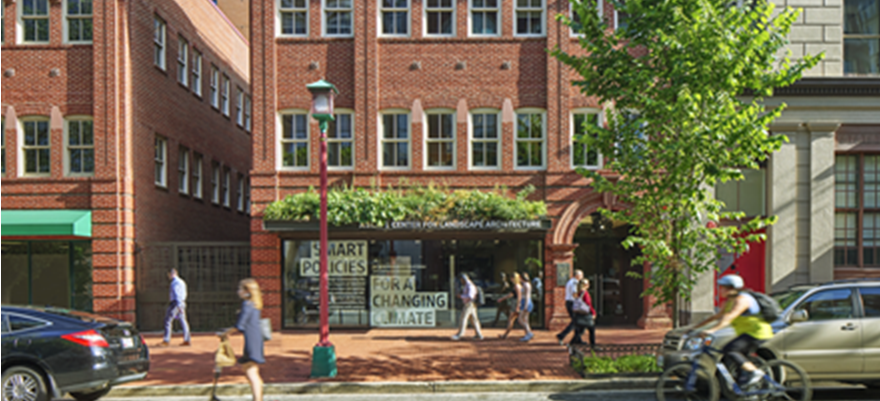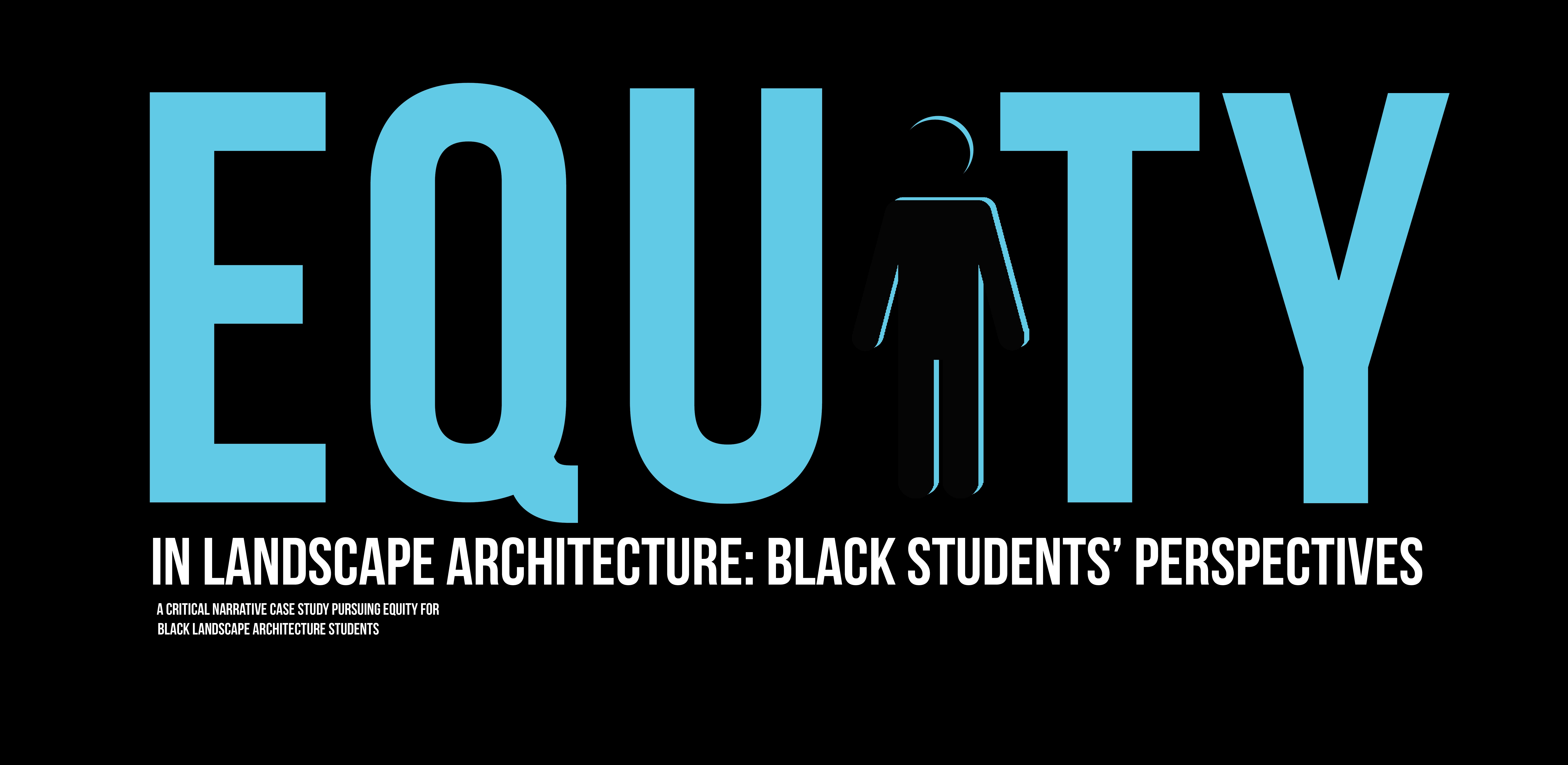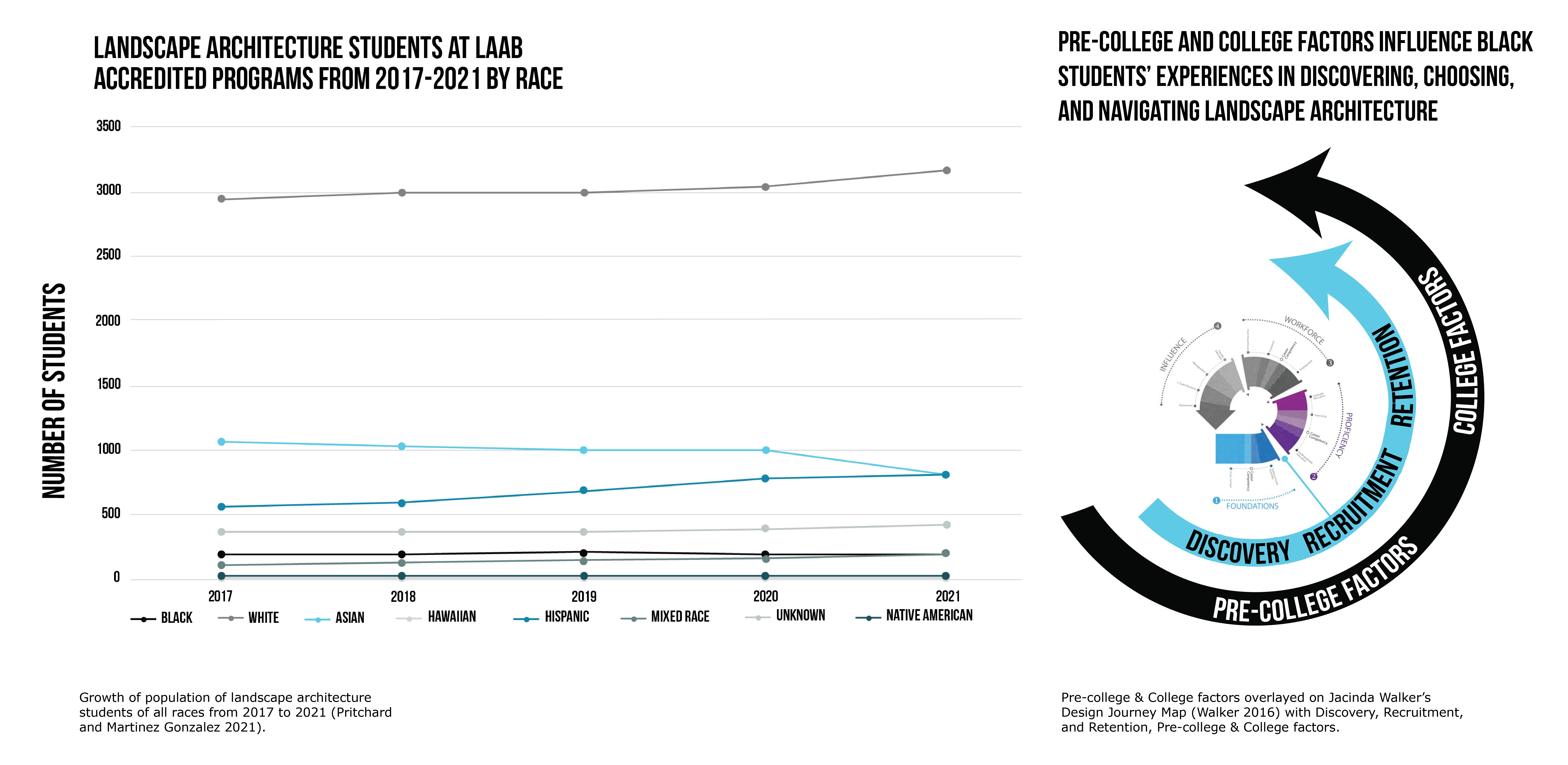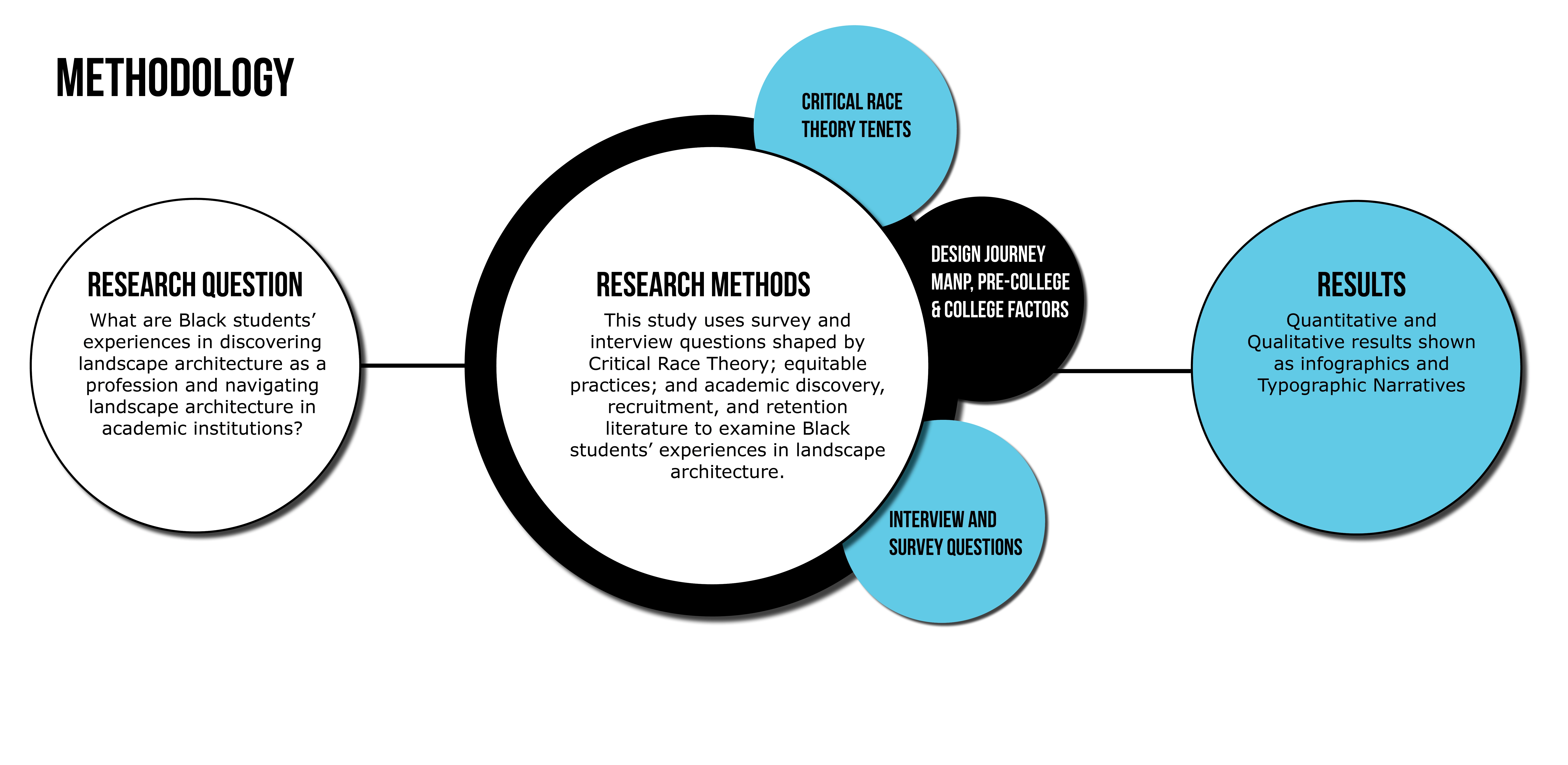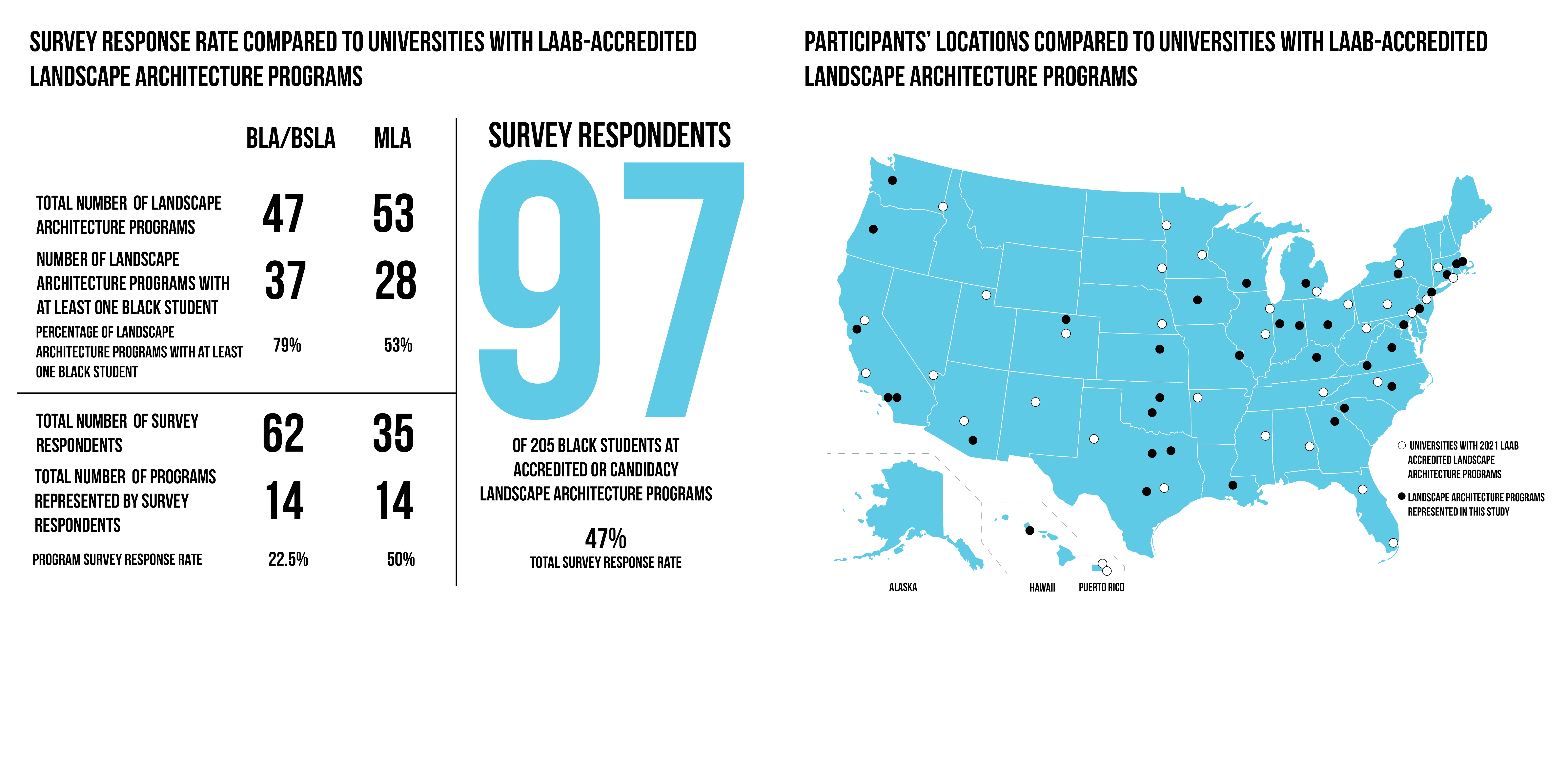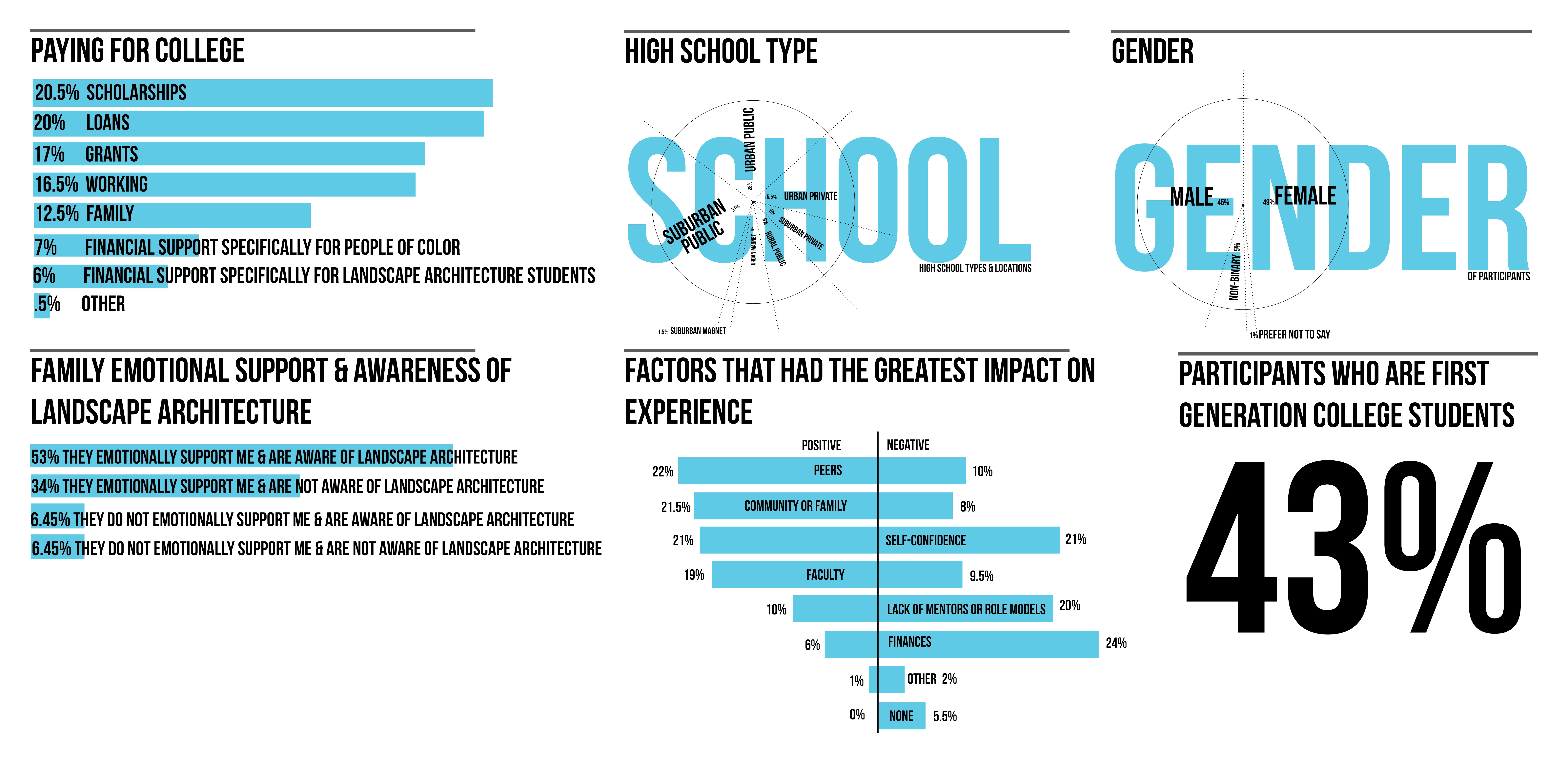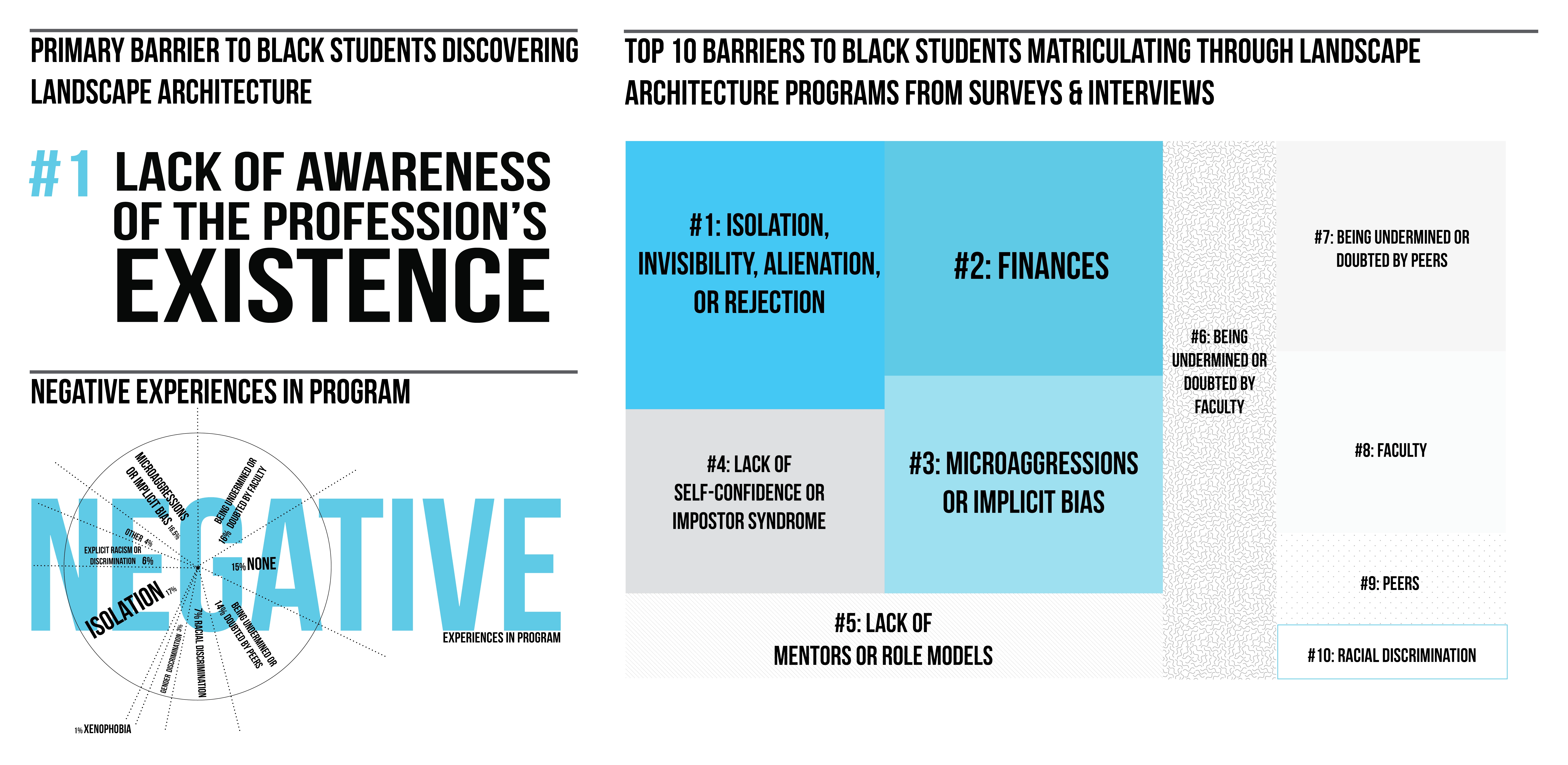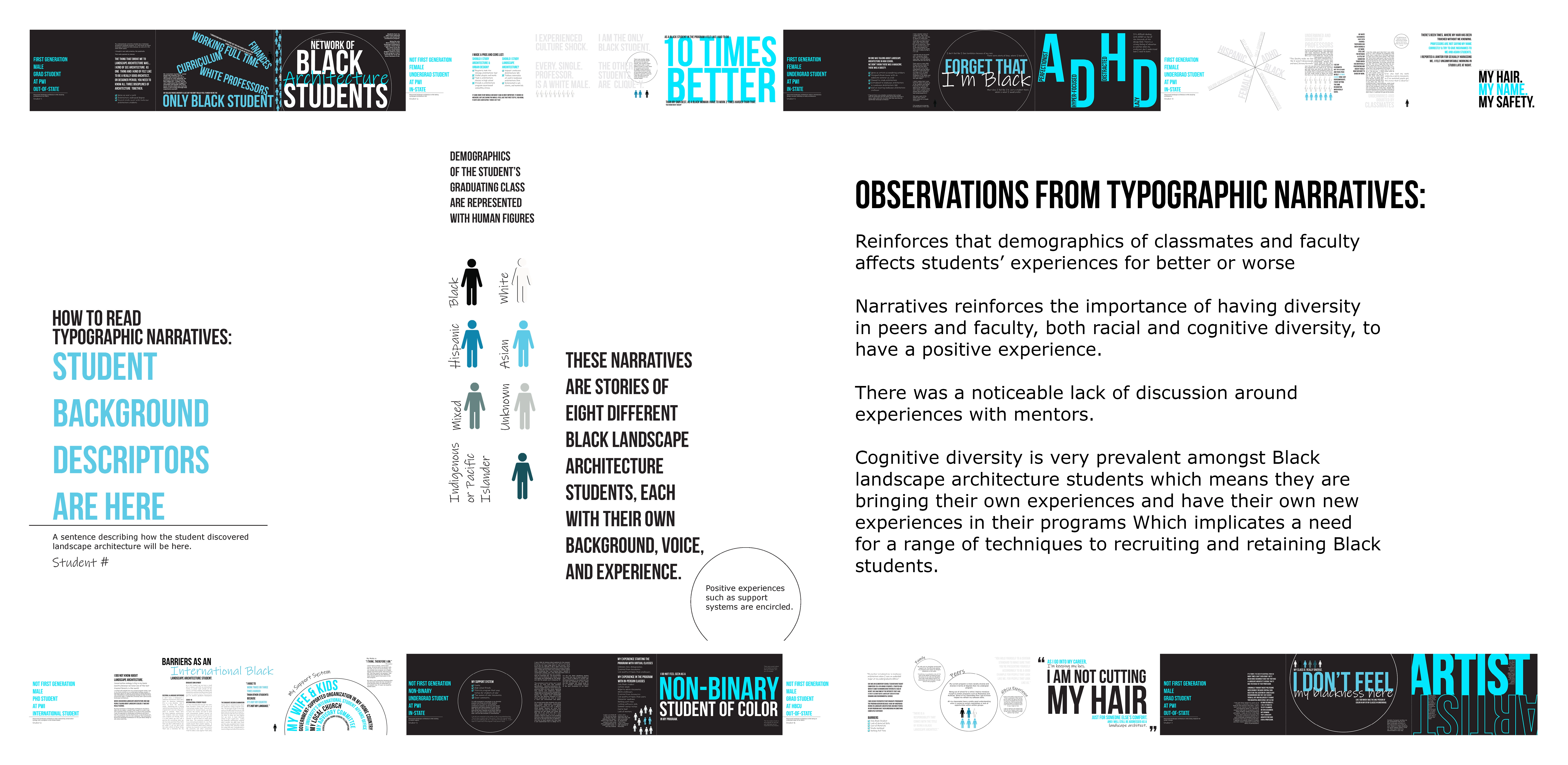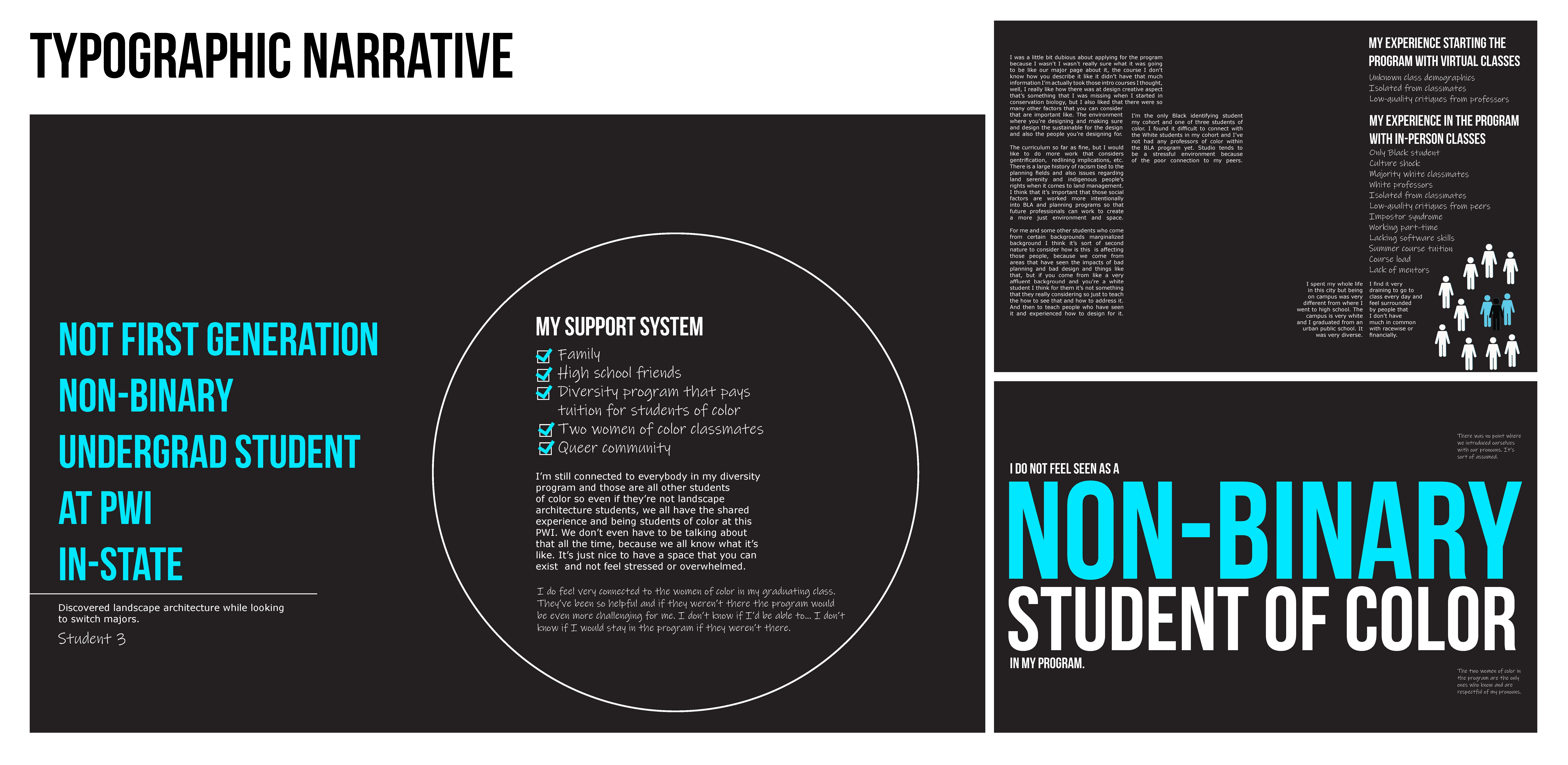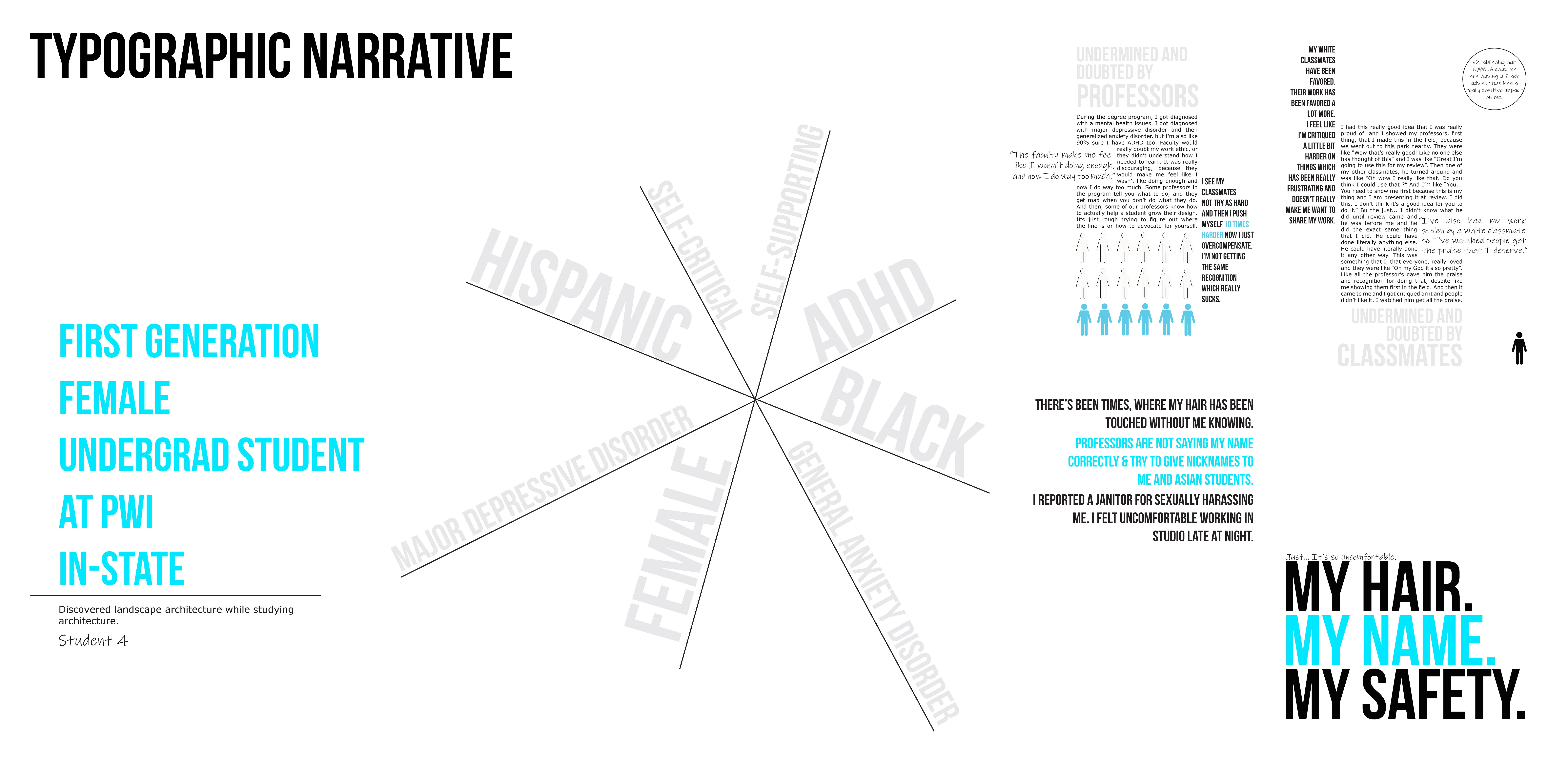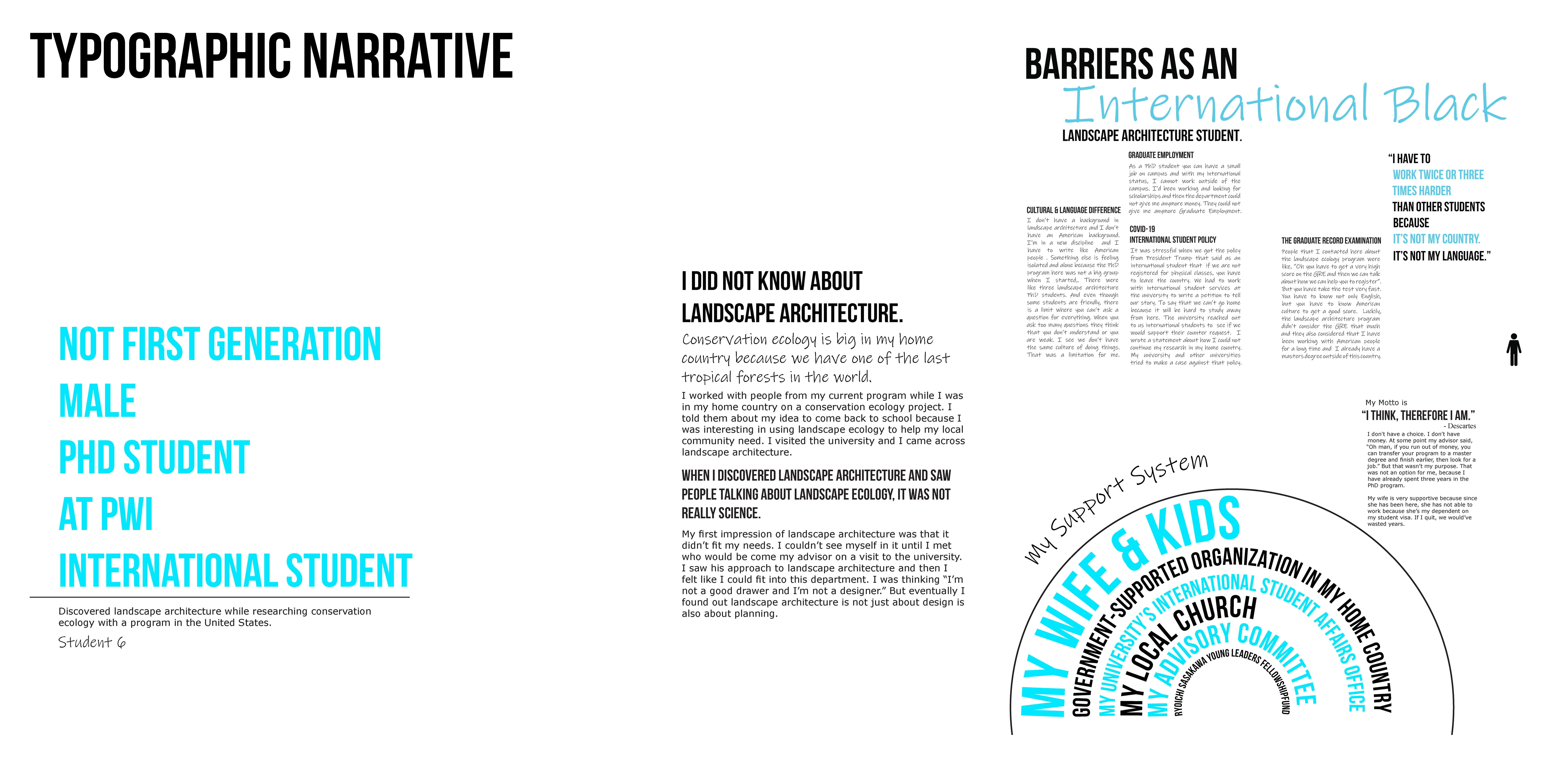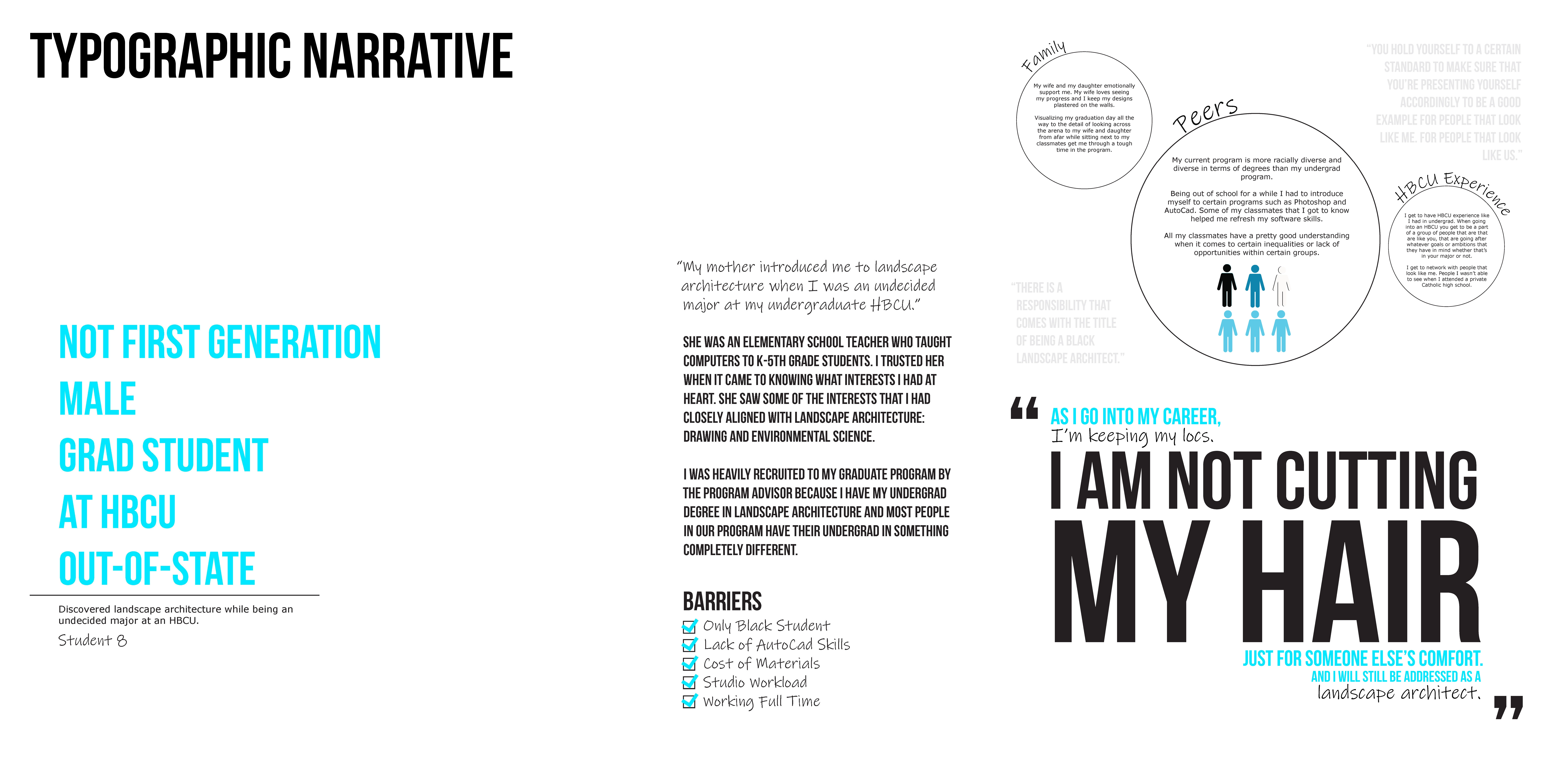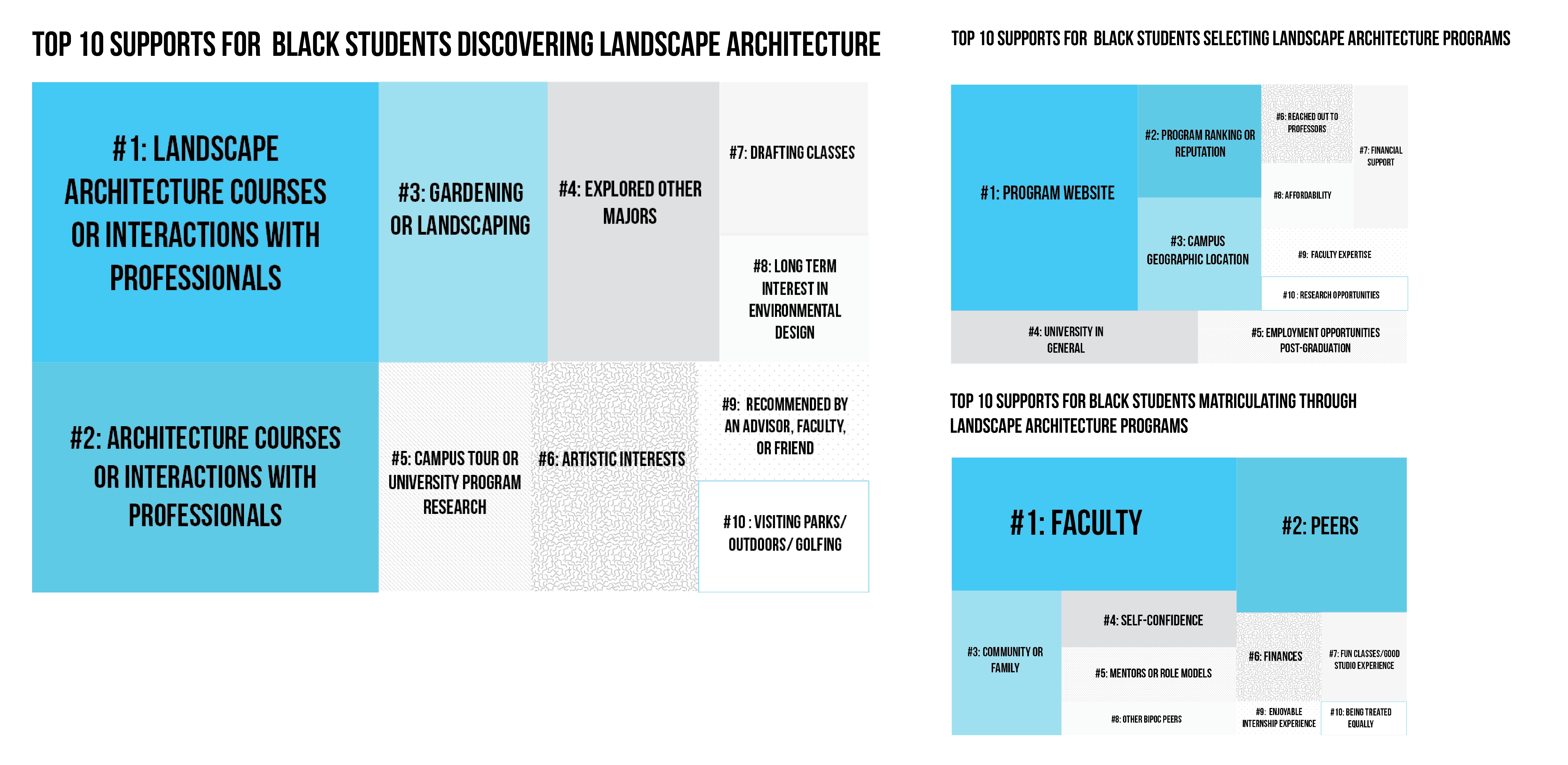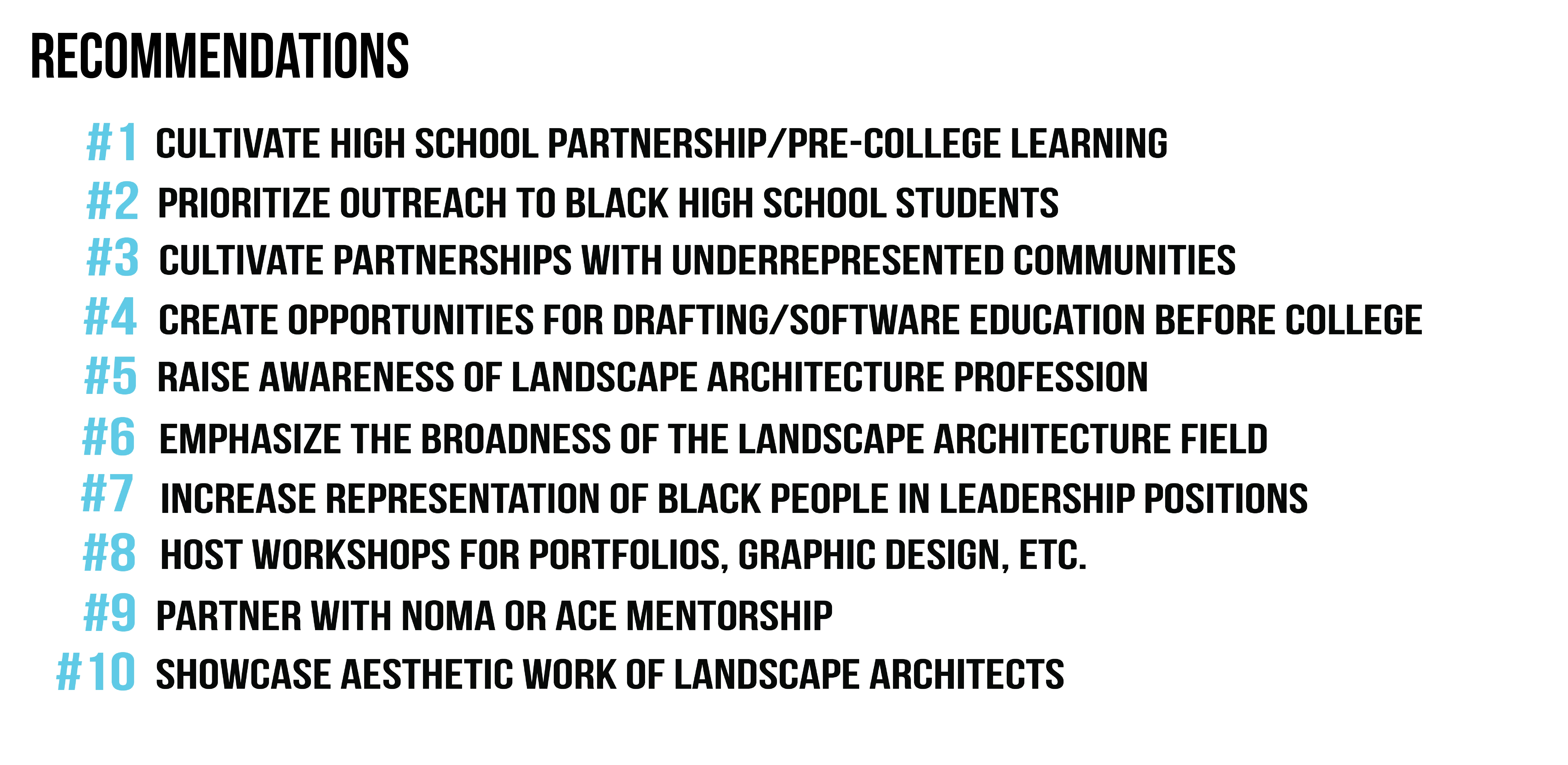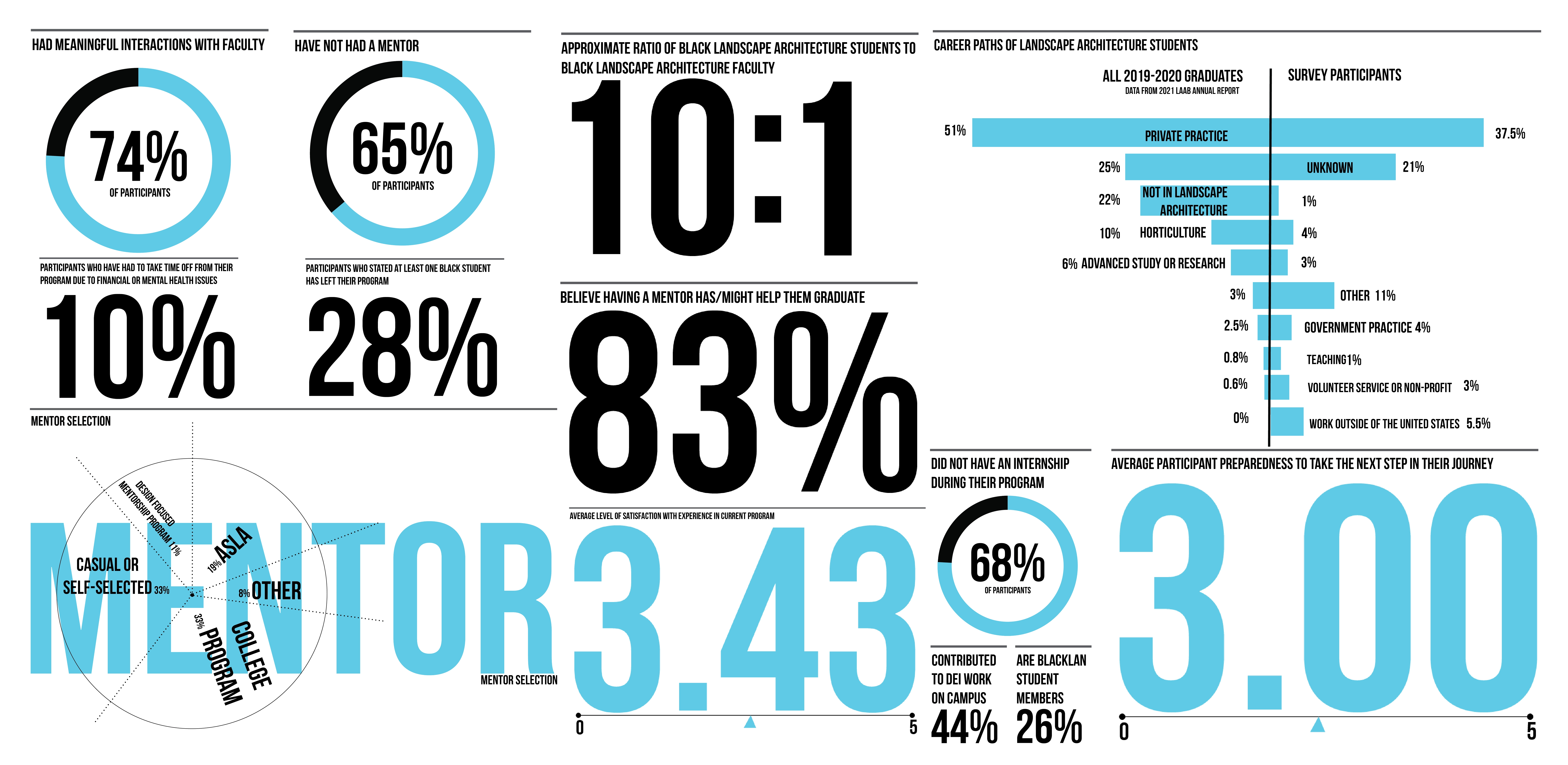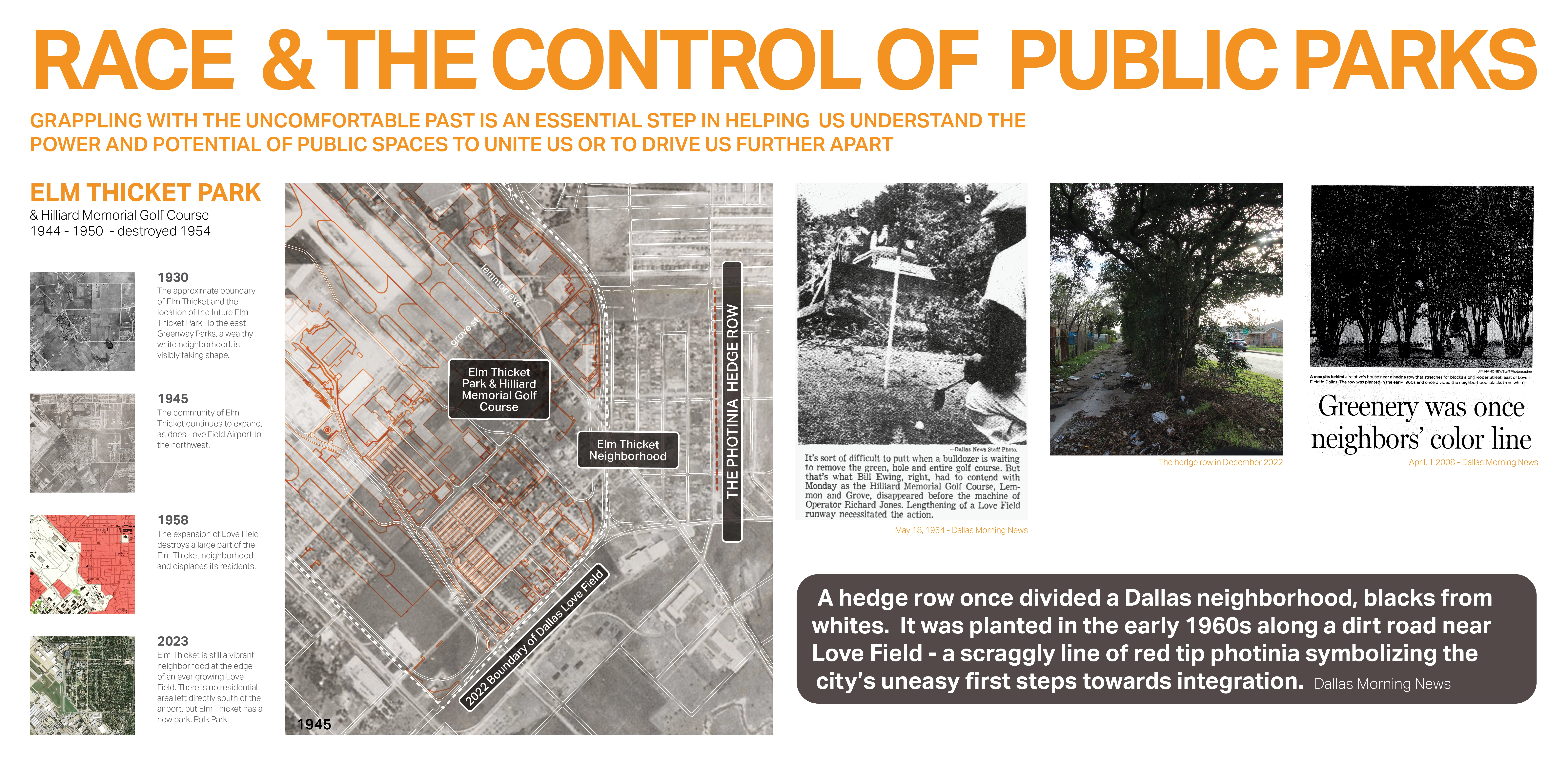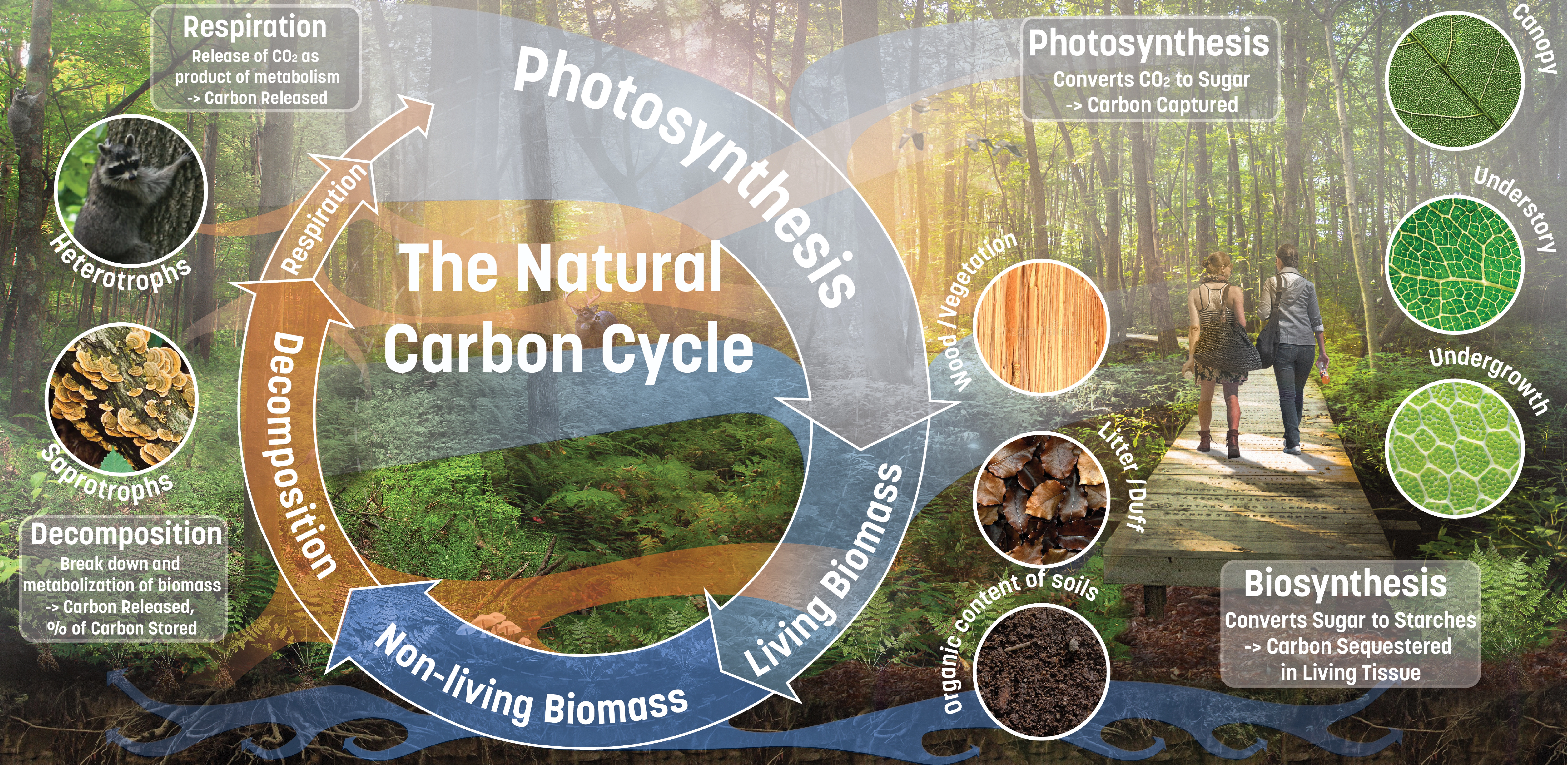Equity in Landscape Architecture: Black Students’ Perspectives
Ayana Belk, Associate ASLA
Excellent work, good quantitative data, good drilling down on issues that are timely and important now. There are some connecting elements to practice that can be explored. Brilliant, this was needed yesterday! Thank you for your excellent and rigorous scholarship and beautiful delivery of your results. The project format reminds me of the Women in Landscape Architecture project, which was very impressive.
Awards Jury
-
Landscape architecture professional organizations share the goal of diversifying the profession (American Society of Landscape Architects 2018), but they cannot reach this goal without addressing the causes of outcome disparities within our academic programs. There is no research exploring disparities from the perspective of the profession’s most underrepresented students, Black students. This project collected data from Black students across the United States to investigate how they discover, select, and experience their landscape architecture programs. The research uses counternarratives to examine cognitive diversity in Black landscape architecture students, reveal problem areas in programs, and make recommendations to close the gap.
-
The shared goal of diversifying the landscape architecture profession is an important first step but there have been no significant studies of the experiences of underrepresented students in academic programs that fuel the landscape architecture profession. With the United States population being 13.4% Black and landscape architecture programs having 4% Black students, now is the time to understand the experiences of the most underrepresented students in landscape architecture programs to close this knowledge gap.
This study asks: What are Black students’ experiences in discovering landscape architecture as a profession and navigating landscape architecture in academic institutions? What factors contribute to a successful academic journey for a Black landscape architecture student? What factors make the journey difficult? What do Black landscape architecture students feel would make their journeys more successful?
This study surveyed 97 students enrolled in 28 LAAB-accredited programs across the United States in the 2020-2021 academic year who identify as Black or African American. Eight survey respondents were selected for indepth interviews. The selection process was guided by proportional representation of undergraduate and graduate programs with reservation of two participant spots for students from historically black colleges and universities to ensure their stories are shared in this study.
Quantitative and qualitative data from multiple-choice and open-ended survey questions and participant interviews were used to examine Black students’ experiences in discovering, choosing, and navigating their landscape architecture programs. The conceptual framework is informed by Critical Race Theory, narrative inquiry, and case study methods. Survey results were analyzed using descriptive statistics and deductive coding with apriori codes (Saldana 2021). The apriori codes were determined from an indepth literature review. The survey results are illustrated in infographics detailing students’ backgrounds, experiences, and recommendations to the landscape architecture field. Key points in the interviewees’ stories related to the discovery, recruitment, and retention portions of their design journey were identified and retold anonymously through counternarrative visualizations, dubbed “Typographic Narratives” by the researcher.
This engaged research revealed that cognitive diversity is prevalent amongst Black landscape architecture students, demonstrating the need for a range of techniques for recruiting and retaining them. The Typographic Narratives reinforce the importance of having both racial and cognitive diversity in peers and faculty. Primary recommendations to equitably diversify the landscape architecture field include cultivating pre-college learning partnerships, reworking landscape architecture curricula to be less white/Eurocentric, and increasing professional development mentorship.
As the ASLA embarks on their Racial Diversity Plan of Action and the LAF continues with its Ignite program, the findings of this study provide valuable insights into the experiences of Black landscape architecture students. This study provides a starting point for informed actions by landscape architecture organizations and academic programs to increase diversity, equity, and inclusion in the landscape architecture field. It means to move individuals and organizations to further contemplate, research, and act on the disparities identified here.

.webp?language=en-US)


